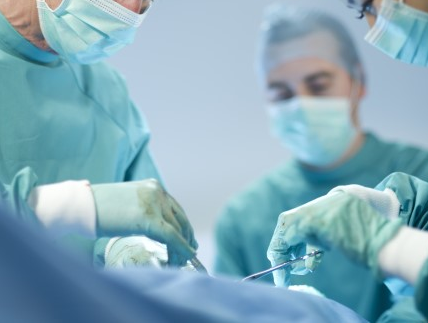Laparoscopic Sacrocolpopexy Procedure, Recovery, Risks | Sacrocolpopexy vs sacrohysteropexy
A sacrocolpopexy is a surgical technique that is performed to repair the prolapse of the pelvic organs. A disease known as pelvic organ prolapse is characterized by a loss of the normal support provided by the pelvic floor. This condition is analogous to a hernia in the vagina and can be quite painful. Pelvic organs might fall out of their usual positions or sag when this support system is damaged, ripped, or otherwise strained (prolapse).
The sacrum, often known as the tail bone, is the bone that is located at the base of the spine. During sacrocolpopexy surgery, the surgeon will connect surgical mesh from the vagina to the sacrum. The surgeon may choose to remove the patient's uterus if it is still present, with or without removing the cervix. In the event that the cervix is left in place, the mesh will be attached to the vaginal walls and on top of the cervix.

Procedure
A sacrocolpopexy is typically carried out laparoscopically (via tiny cuts or incisions) as follows:
- In order to keep the patient sleeping throughout the surgery, general anesthesia is given.
- 4 to 5 abdominal incisions are made.
- In order to provide room for the surgery, the abdomen is distended with carbon dioxide gas.
- The incisions are made to pass various equipment, including a laparoscope, which is a tiny, telescope-like tube with a camera.
- The top of the vagina or the cervix is placed back into its normal position by a sheet of surgical mesh that is connected to the front and back walls of the vagina and subsequently to the sacrum.
- The cervix may be left in place if it is still there whereas the uterus may typically be removed during these procedures. Depending on their age and genetic background, some women also elect to have their ovaries and/or Fallopian tubes removed.
- The surgeon may perform repairs, typically through the vagina, to the bladder or rectum if there is insufficient support for these structures.
- In cases of urine incontinence, the surgeon may insert a little piece of mesh beneath the urethra to provide support when coughing, laughing, or sneezing.
- A tiny camera is used to check the bladder inside after surgery to make sure no damage was done to the organ.
Recovery
- After the surgery, the person should get a lot of rest.
- The first and second night following surgery should be spent at home.
- After surgery, patients may experience tiredness and confusion as a result of the anesthesia.
- Any discomfort might be eased by taking a warm shower, using a heating pad, or going for a walk.
- Ibuprofen should be administered to the patient every six hours during the first 24 hours, and the narcotic drug should be taken if required.
- The patient is permitted to take ibuprofen as needed for pain after the first day of surgery.
- A device known as an incentive spirometer will be given to the patient to use as a breathing aid.
- Following surgery, it is typical to experience some vaginal discharge or very minor bleeding.
- A patient may shower 48 hours following surgery, but she should wait 6 weeks before taking a bath or swimming.
Risks
There are certain dangers associated with surgery, including:
- Significant bleeding could result from damage to an artery or vein
- A perforation in either the bladder or the rectum
- Vaginal prolapse may not be prevented or improved
- Protrusion of the bladder or rectum (rectocele) (cystocele)
- Back pain
- Leg numbness
Sacrocolpopexy vs Sacrohysteropexy
A sacrocolpopexy is a procedure used to address a prolapse affecting the top of the vagina (vaginal vault) in patients who have previously undergone a hysterectomy (removal of the womb). Sacrohysteropexy is a surgical procedure used to cure a prolapse of the womb when the patient does not want the womb to be removed as part of the treatment.
 Reviewed by Simon Albert
on
August 19, 2022
Rating:
Reviewed by Simon Albert
on
August 19, 2022
Rating:











